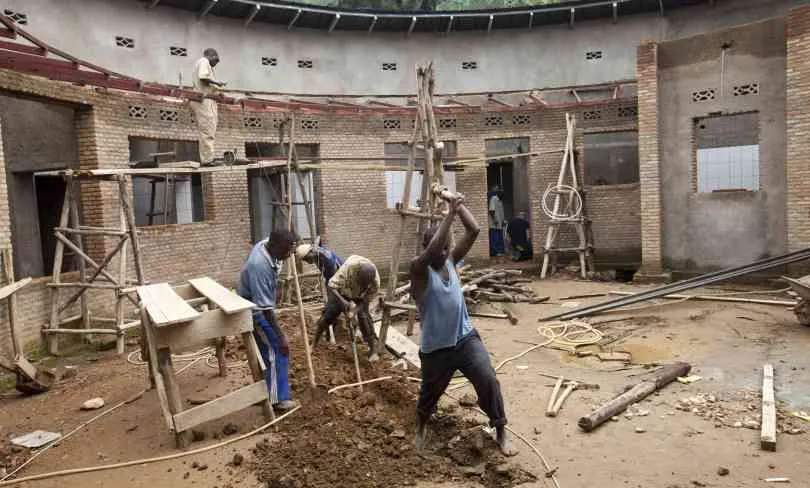A country of children - Burundi
Joseph Antonioli, former President of the Rotary Club of Orta San Giulio, informs us that the first image taken by the volunteers who arrived in Masango, Burundi in 2006 shows children eating, with their feet in a stream of dirty water: fragile children abandoned with indifference and fatalism at the mercy of the world. There were also many orphans or children abandoned by mothers incapable of taking care of them, and their fate is at least in jeopardy, if not already sealed.
After looking at this image, the members of the Rotary Club of Orta San Giulio decided to take care of Masango: the main focus was on the children who should never be left alone anywhere in the world for any reason, or even worse, abandoned to fend for themselves.
With the help of the professionals involved, who travelled there every few days or weeks to design and actually build the structures, the following premises have already been completed:
− The "Casa del bambino" orphanage (400 sq.m. including the necessary equipment)
– The Girls' House (100 sq.m.)
− A building used as a laundry (90 sq.m.)
− A hospital/health centre of 600 sq.m. with sanitary equipment, beds, furniture
– A 10 km aqueduct with 20 fountains
– A solar panel system for the production of domestic hot water for the hospital
− Replacement of the 50 kw generator.
The total cost amounted to approximately € 370,000.
Caleffi also gave its contribution by donating the materials to build the solar panel system for hot water production at the new hospital. Labour was provided by a group of professionals who generously worked "at the construction site" along with some local young people.
The mission in which Caleffi took part reached Masango in December 2010, while the materials had already been sent by ship inside containers in March.
The geographic location and the lack of qualified personnel for maintenance made it difficult to design and build a system of this kind: the system layout had to be as simple as possible and above all “reliable” over time.
The plant, whose diagram is shown here (0.11 MB), consists of a tank with 500 L capacity connected to three flat Hitec solar panels (model FK), generously donated thanks to the contribution from the BEA company from Belardi di Crevoladossola (VB).
Because of the absence of problems caused by frost, the primary circuit with glycol water was eliminated to make domestic water pass directly into the solar panels: the standard circulation unit consists of a simple Solar circulator (Grundfos). The “domestic” cold water comes from a storage tank located on a nearby hill, high enough to generate a prevalence of about 2.5 bars: the circuit of the hospital is supplied exclusively by this “natural” pressure.
The biggest problem was the presence of air inside the system. The problem was solved by using a vertical degasser installed upstream of the circulator, an air vent valve at the input of the solar panel line and one on the output line from the tank to the building.
The system is managed by a control unit connected to a temperature probe located inside the last solar panel. The control unit consists of a regulator programmed at 30°C and a relay to control the circulator. This solution allows the system to be independent from weather conditions and to be turned off automatically during the night. Two other problems which we had to take care of were the possible stagnation inside the panels, solved with the installation of an air vent valve inside the panel to discharge the steam, and the possibility of an over-temperature condition inside the tank, solved by installing a temperature-pressure valve in it. The absence of people with the necessary expertise to manage/adjust the system led to this configuration, which is questionable in some aspects but “realistic” in many other ways. A first analysis of the state of the system will be carried out during the next mission scheduled in early 2012.
Thanks to the Rotary Club of Orta San Giulio and the generous support of companies such as Caleffi, private individuals and associations, an extraordinary humanitarian project is coming to life, “built” directly through the professionalism of everyone involved.
What expectations are there for the majority of children from Masango? An average life span of fifty years for the luckiest ones; material poverty, which should be called misery, and little chance of an education or those opportunities that everyone enjoys in our “poor” advanced Western world.
We are working so that their perspective may change ... “from the bottom up”.
Mr. Domenico Mazzetti - Head of the Market Analysis and Research









